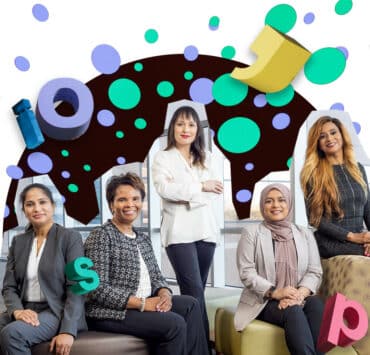|
Getting your Trinity Audio player ready... |
Vasu Rangadass has an incredible track record of building cutting-edge tech companies, taking them public, and then doing it all over again. The president and CEO of L7 Informatics has been the first employee for a business so many times that it doesn’t seem novel anymore.
Rangadass, who holds both a master’s degree and PhD in computer science, is the architect of i2 Technologies, a software company specializing in supply chain management, as well as Net.Orange (now NantHealth), a tech company with a healthcare focus.
The entrepreneur has doubled down on healthcare and life sciences with his latest creation, L7 Informatics, which takes a patient-first approach in its mission to reduce the operational cost of researching, developing, and manufacturing pharmaceuticals.
“I want to build systems that streamline, automate, and optimize operations to reduce the cost of goods sold so that we don’t have to spend half a million—or sometimes over a million—dollars in the creation of these new therapies and treatments,” Rangadass explains. “Part of reducing operations cost for companies is to reduce the number of IT systems and human resources that are maintaining them.”
Achieving that goal comes down to reducing point solutions: tools or services aimed at solving singular solutions for organizations. Rangadass believes that organizations need to think more holistically and systematically about their entire organizations, not just seeking out quick fixes for problems that may operate more as costly Band-Aids than actual solutions.
“I want to build systems that streamline, automate, and optimize operations.”
Vasu Rangadass
As an example, he points out how budgets are organized in a traditional business: a department is given a budget and in turn, it provides budgets to subdepartments. Each subdepartment builds or buys their own systems—creating additional barriers of operational and information silos.
“If you have two hundred subdepartments, you’ve suddenly got two hundred different IT systems,” he explains. “This is old, precomputer organizational design thinking. That division-of-labor-style thinking doesn’t really apply when you’re talking about machines that can perform very large complex tasks extremely quickly.”
Instead, the aim should be to create a holistic computing system that connect data between different departments. To do that, Rangadass says, organizations must embrace unified platforms. He sees it as his job to educate the market on why a unified systems approach makes more sense, and will be far more effective, than continually compiling a haphazard collection of point solutions.
Rangadass knows a thing or two about building systems. His talent for creating new approaches to solving problems spans multiple organizations, patents, and schools of thought. But one thing has remained constant: success.
That’s why Rangadass is so committed to helping revolutionize the life-sciences and healthcare industries. He knows it desperately needs expertise like his to reduce costs and create a better world for patients and providers.
“I think there is a lot of opportunity to create wide-scale change across pharma, across payers, across providers, and to integrate the patient at home into a larger ecosystem of integrated solutions,” he explains. “Our goal is really to focus on the patient by bringing drugs to market faster and reducing the cost of the drugs being manufactured. It’s continuous improvement, and it’s about focusing on the return on investment that we want to bring by optimizing workflows and eliminating those single-point solutions.”
True digital transformation isn’t confined to a single department or entity, Rangadass notes. Instead, it affects the entire business system. If that doesn’t happen, bottlenecks appear in short order and in very unpredictable ways.
“Our goal is really to focus on the patient by bringing drugs to market faster and reducing the cost of the drugs being manufactured.”
Vasu Rangadass
Digital transformation starts by educating the organization and its customers about the importance of change. It’s not just about a new IT system, but a series of processes in a unified platform that can be implemented in a way that enables measurable results and continuous improvement.
L7 provides a toolset to support the digitization of processes, the means of measuring the desired outcomes, and the tools to modify or improve the process when needed. The organization also combines the lessons from all his successes and failures over the years.
Rangadass’s PhD taught him the mechanics of data, AI, and machine learning. In supply chain management, he learned about thinking horizontally and across larger system landscapes. In building businesses, he dove into the complexity of the healthcare system and what it takes to improve patient outlooks and quality of life.
And now there is L7. “Our vision and goal is to take these precision medicine principles and make life easier and healthier, ultimately taking several billion dollars of waste out of our healthcare ecosystem in the process,” Rangadass explains. “I believe we can. That’s what makes it exciting.”

